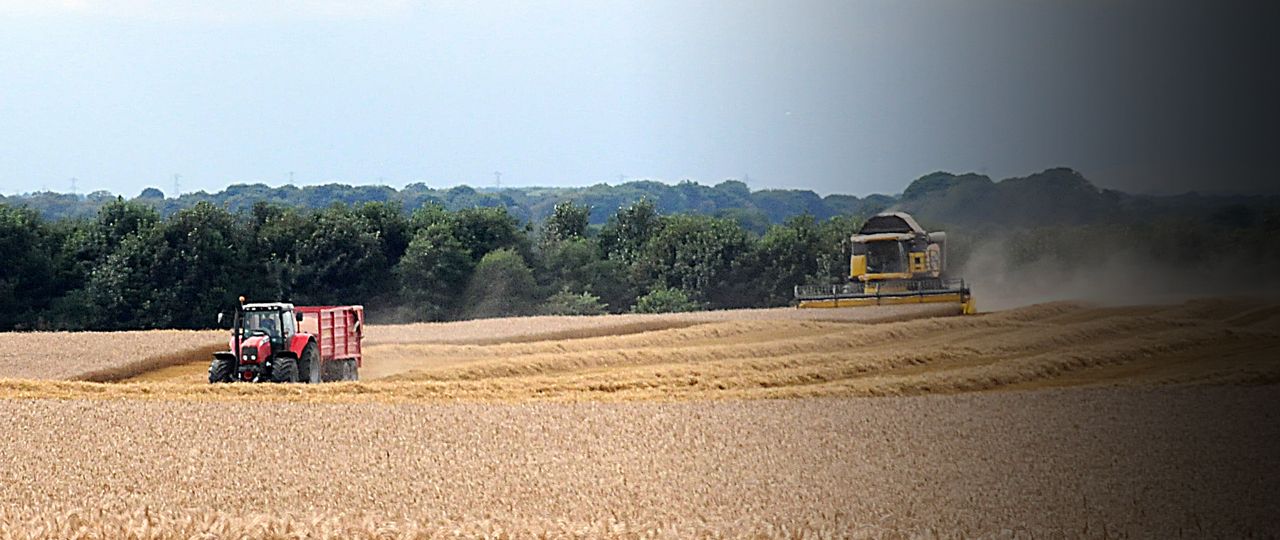
George Chichester
Senior Director, Farm & Estate Management


Senior Director, Farm & Estate Management
A solid investment strategy for your farm machinery can help you stay on top of repairs, replacements and costs. But what impact will Brexit have on this strategy?
Farming machinery is one of the biggest outlays a farmer has. But it’s not just a one off cost – over time machines need updating, repairing and even replacing. We take a look at what makes a good investment strategy and the impact Brexit could have on it…
Your investment strategy
If you don’t have a strategy in place, the first thing you need to do is an audit of all machinery. This involves not only finding out what you have, but also its current value, state of repair, running costs, what’s missing and what needs replacing.
It can be quite hard to put a value on old machinery as the cost varies. Plus, you also need to take into account any interest you’ve paid on it and how much you’ve still got to repay. Then there’s the running cost. The older a piece of machinery, the more expensive it can be to run.
If you’re considering replacing an item or number of items, you need to do your sums. The rule of thumb is that you need to think about getting a new piece if the current cost of owning and operating something begins to increase.
You also need to consider how reliable the item is. Does it do the job you need it for? Repairs might be easy and cheap, but if it means the machine is out of action for a few days at a time, that adds to the cost of running it. This is especially pertinent at peak times like harvest. A day cost at the beginning of August will cost double at the end of the month.
Other considerations include the introduction of new technology that makes your current equipment redundant or ineffective; the need to increase your working capacity if you’ve invested in new land; or there are changes in the market that could alter your investment strategy – such as a vote to leave the European Union.
When to replace?
Some replace regularly to keep equipment in good condition and reduce running costs. This also has the benefit of providing equipment that’s under warranty, reducing repair costs. But it can be more costly as you’ll have constant outlay and higher depreciation.
Others set a yearly budget and machinery replacement policy. This means they can better plan their outlay over time. The downside is that often they can end up replacing items unnecessarily.
Some like to simply replace items when they can afford it – this has the problem that recently that doesn’t happen very often. It can also lead to a downward spiral where farmers can’t afford to update and use dated machines. This leads to increased repair costs and poor efficiency, further reducing their ability to put money aside to replace items.
Finally, you could simply run a piece of machinery into the ground and replace it when it’s no longer fit for purpose. This means you often get plenty of value from your initial investment. But it will be harder to plan your budget not knowing when you’ll need to invest. You’ll also have to use dated and ineffective machinery for some years.
The impact of Brexit
The vote to leave the European Union will have a big impact across the farming industry, especially when it comes to investment in machinery. Here’s what you need to know…
Uncertainty
With plans still not solidified and everyone unsure how life will be after Brexit, there’s an air of uncertainty over the industry. Many farmers might want to delay large investments in machinery until they’re more certain of their future income and direction of their business.
At Strutt & Parker, we suggest taking a prudent and sensible approach to farm management, making sure your farm is budgeting to make a profit, even at lower commodity prices. This might mean keeping a tight rein on capital expenditure in the short term – especially when it comes to new machinery.
Currency
As it stands, UK farmers are benefiting from the low value of the pound as it makes their produce more attractive to overseas customers. But there are two issues with the low value – firstly, it may well be a short-term fluctuation that can’t be relied on in the future.
And more importantly, it also makes foreign imports much more expensive. This means that if you bring your machinery in from abroad – which many farmers do - you could currently pay as much as 15-20% more than you usually would.
Diversifying
Many farmers are considering diversification as a way to spread the risk. The post-Brexit strategy to address an overexposure to agriculture is a good one, but it could also affect your machinery investment strategy.
If you move away from more traditional farming activities towards something like tourism or retail, it means you’re using your machinery less or that it plays a smaller part in your overall financial situation. This could be a benefit during times of uncertainty as it’d mean less reliance and usage of the machines, reducing running and repair costs and the chance to delay investment while you focus on your diversified business.
Low borrowing costs
Currently, as part of the Brexit effect, we’re seeing borrowing costs dropping to all-time lows. Some think this could help offset the uncertainty around Brexit and the impact of more expensive foreign imports.
If you can bring machinery in from the UK, you could use the low interest rates to re-gear and invest in machinery for the future, putting you in a better position no matter what the outcome of the vote to leave.